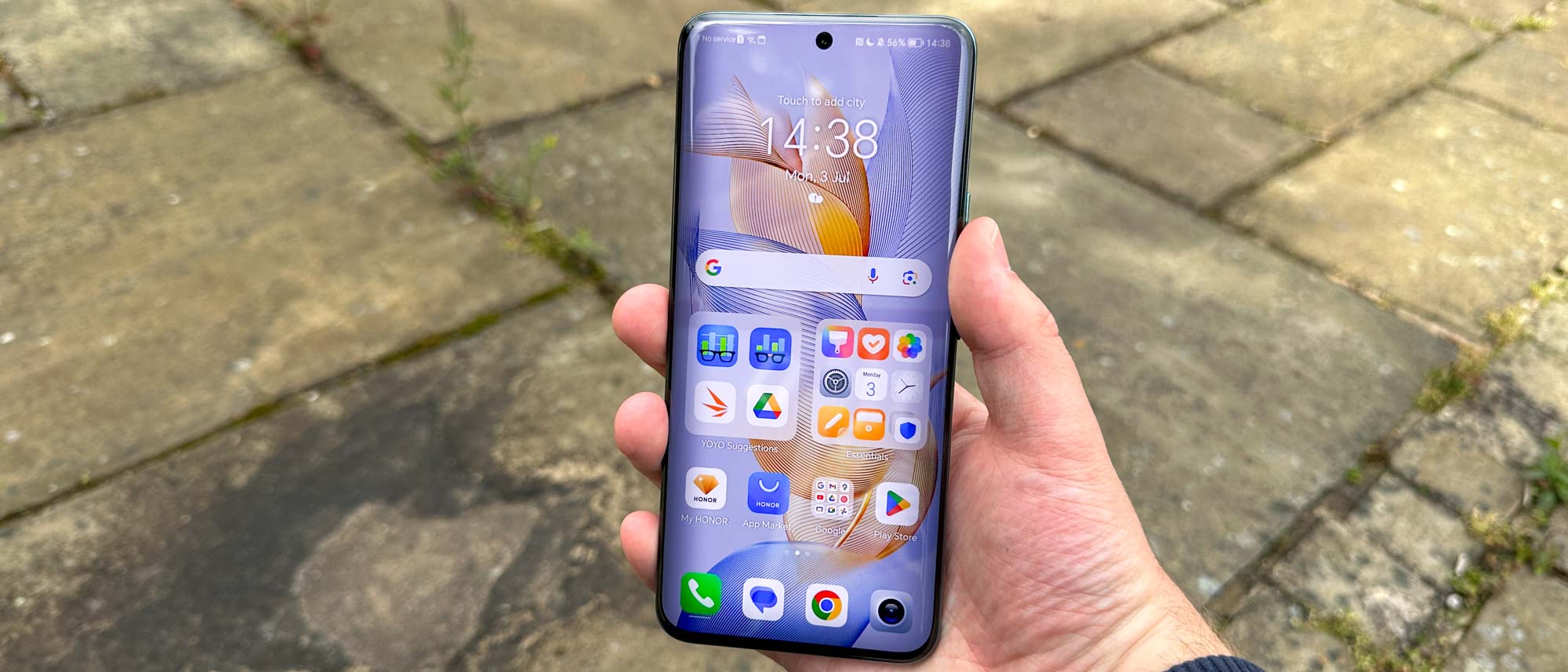Tom's Guide Verdict
It’s easy to justify buying the Honor 90 for its big, vivid screen and chunky battery, but the phone also treats you to super-detailed photography and lots of storage capacity. Avoid it if you want a more natural-looking photo experience or lengthy software update support. It’s also not available to U.S. shoppers.
Pros
- +
Large, bright display
- +
Big battery and fast charging
- +
Generous storage options
- +
200MP photography
Cons
- -
No U.S. availability
- -
Photos often oversaturated
- -
Shorter than average software support
Why you can trust Tom's Guide
The Honor 90 stands out in a line-up of midrange phones, both literally and figuratively. Its large frame and focus on display and battery specs dwarf the competition, and it’s not often you find a 200MP main camera at this price.
Looking past the limited availability of the Honor 90 — U.S. shoppers won’t have a chance to buy this device — its worst qualities are its extreme photo processing and a disappointingly low amount of promised updates. Those are two very big parts of the smartphone experience, but fortunately the rest of the Honor 90 is good enough to outweigh those shortcomings.
This device has plenty going for it, although it doesn't quite hit the consistent highs needed to land it a spot on our best cheap phones guide. But read on and learn which type of user will still find the Honor 90 ideal for them.
Honor 90 review: Specs
| Starting price | £449 |
| Display | 6.7-inch OLED (2664 x 1200) |
| Refresh rate | 120Hz/90Hz/60Hz |
| Chipset | Snapdragon 7 Gen 1 Accelerated Edition |
| RAM | 8GB/12GB |
| Storage | 256GB/512GB |
| Rear cameras | 200MP main (f/1.9), 12MP ultrawide (f/2.2), 2MP depth (f/2.4) |
| Front camera | 50MP selfie |
| Battery | 5,000 mAh |
| Charging | 66W wired |
| Size | 6.37 x 2.92 x 0.31 inches (161.9 x 74.1 x 7.8 mm) |
| Weight | 6.46 ounces (183g) |
| Colors | Diamond Silver, Emerald Green, Peacock Blue, Midnight Black |
Honor 90 review: Price and availability
The retail launch date for the Honor 90 has yet to be confirmed, but we know the phone is up for pre-order right now, and starts at £449, with a higher-specced £499 version also on offer.
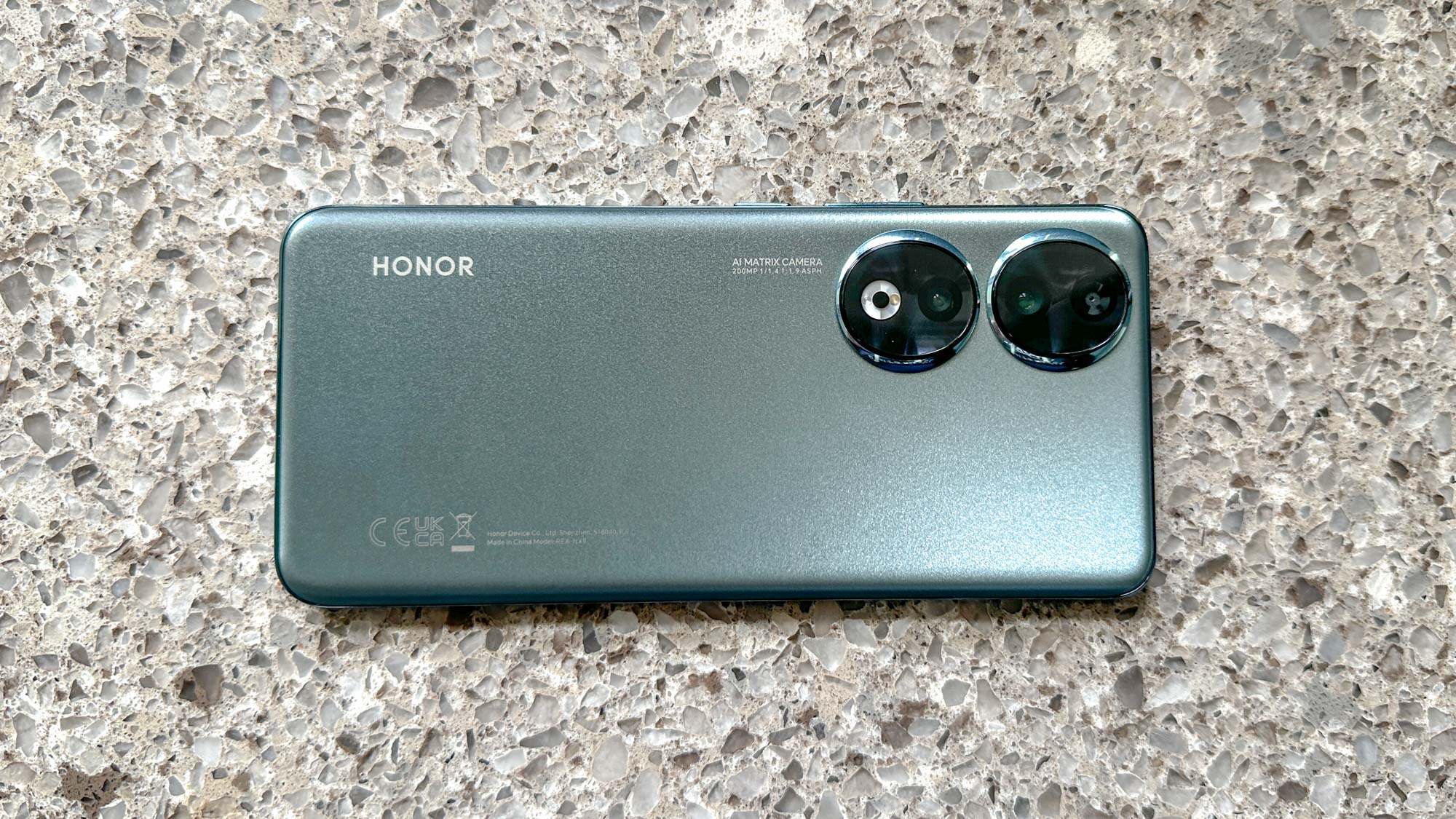
At its basic price, the Honor 90 goes up against competitors such as the Google Pixel 7a and the Samsung Galaxy A54 (both also starting at £449). Like last year's Honor 70, the Honor 90 doesn't have a price advantage to hold over its main competitors, which while reflecting Honor's use of plenty of high-quality components, means it'll have to do a lot to defeat the incumbent cheap phone champs.
It's also safe to assume, like with all Honor phones, there won't be a U.S. release. Maybe this will change one day, but considering what happened to Honor's old parent company Huawei, Honor seems understandably cautious about trying to sell phones in the United States.
Honor 90 review: Design
At a glance, you'd think the Honor 90 was a much more expensive phone than it actually is. The quad-curved display gives the phone a comfortable feel whether you're holding it vertically or horizontally; it’s also the same you'll find on Honor's flagship Magic5 Pro. The same goes for the Honor 90’s matte-textured back panel, which looks rather smart whether it's appearing in Diamond Silver, Emerald Green (pictured), Peacock Blue or Midnight Black.
Get instant access to breaking news, the hottest reviews, great deals and helpful tips.
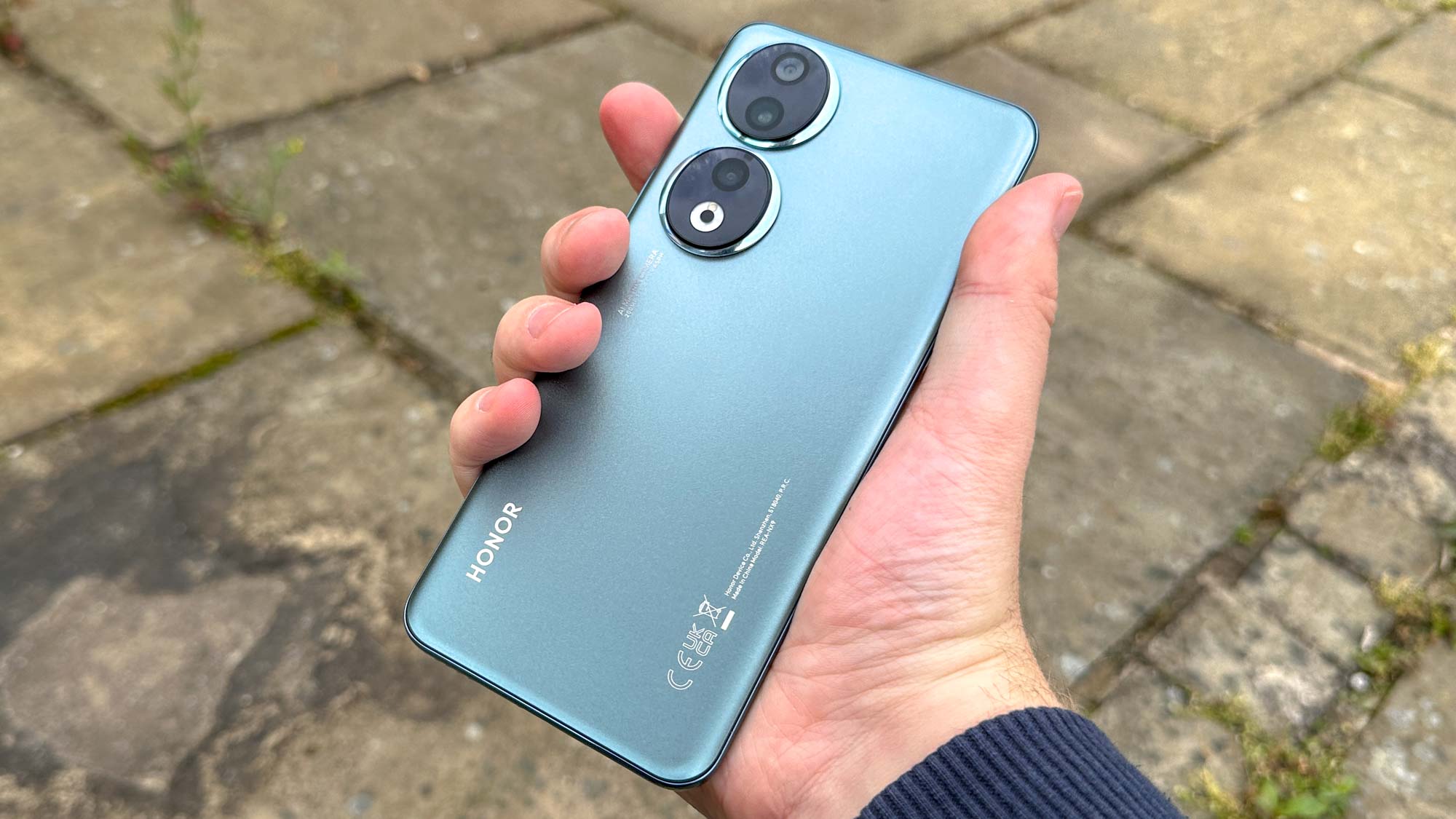
At 6.7 inches, this is a big phone for the price, too. The Pixel 7a is a petite 6.1 inches, while the Galaxy A54 is a slightly larger 6.4 inches. The Honor 90's a strong deal if you want a lot of screen real estate for the price.
The only element I dislike is the dual circular camera block on the back. It continues the Honor 70's style of hiding small camera lenses in large housings, perhaps to make the phone's optics look more impressive. With the shiny metal surrounds drawing your eye further to these bumps, it feels a little dishonest compared to the simpler individual lenses of the Galaxy A54 or the Pixel 7a's camera bar.
Honor 90 review: Display
Honor's put a lot of focus on the Honor 90's display. Not only is it quite large at 6.7 inches, it also offers a 120Hz refresh rate and an alleged 1,600-nit peak HDR brightness. Unusually, though in line with Honor's other phones, the Honor 90 has a resolution of 2664 x 1200 pixels — that’s higher-res than the FHD panels on the Pixel 7a or Galaxy A54, but not quite as detailed as the QHD panels you'll see on flagship phones.
We also see Honor's usual suite of unique features for preserving eye health. There's 3,840Hz PWM dimming, which Honor claims makes the display less flickery and therefore less straining on the eye, along with Dynamic Dimming and Circadian Night Display, which change the screen's color and brightness throughout the day.
All of this apparently adds up to the Honor 90 being easier to use for long periods of time without straining your eyes or disrupting your sleep as much as a typical mobile device display. I didn't get quite enough time with the Honor 90 to tell if I was sleeping better or not, but Honor cites the work of University College London's Prof. Glen Jeffery on blue light and eye strain to prove its effectiveness.
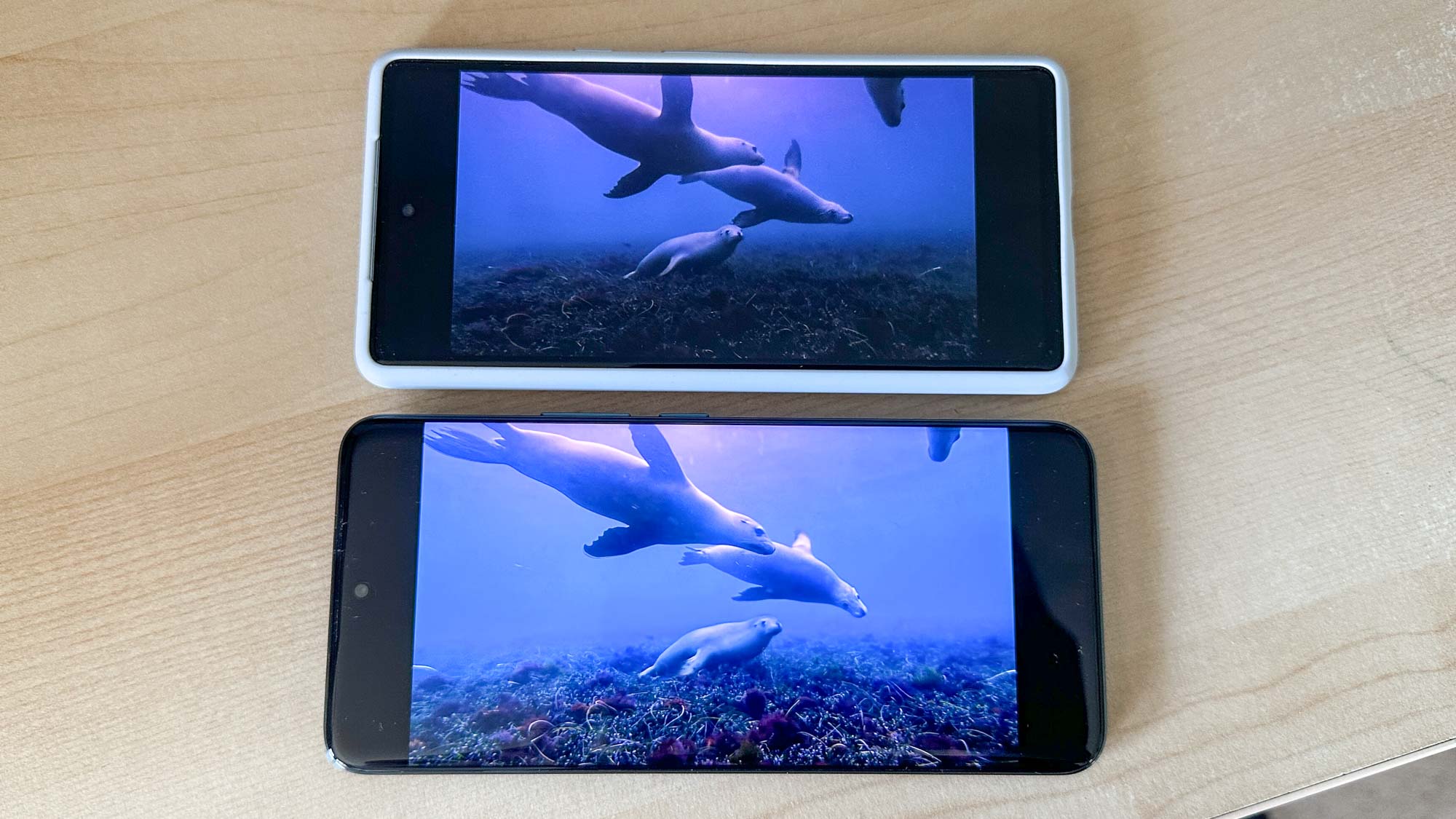
During my battery test (more on that below), I compared the Honor 90 to the Pixel 7a at 50% brightness, and found that the Honor display looked far brighter, with the Pixel barely visible, even indoors.
Honor 90 review: Cameras
Camera hardware on the Honor 90 is a mixed bag. A 200MP main camera usually will be found on flagship phones like the Samsung Galaxy S23 Ultra, but here, it’s a starring feature on a far cheaper phone.
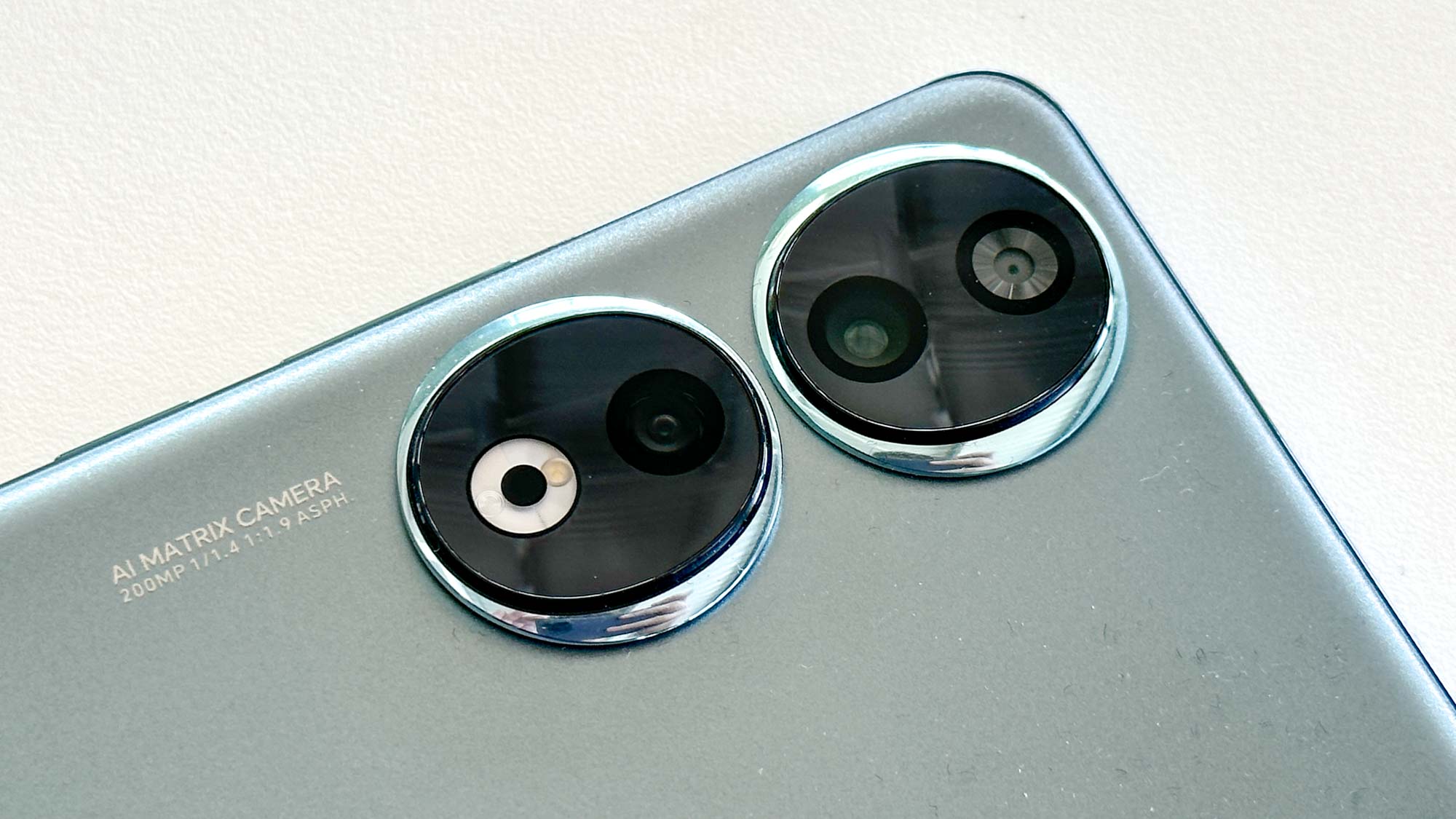
Finding a 50MP selfie camera on the front of the Honor 90 is quite surprising, too, since most front cameras do not have this high of a resolution. The Honor 90’s 12MP ultrawide camera and 2MP depth sensor are more in line with what we'd see from other phones of this price.
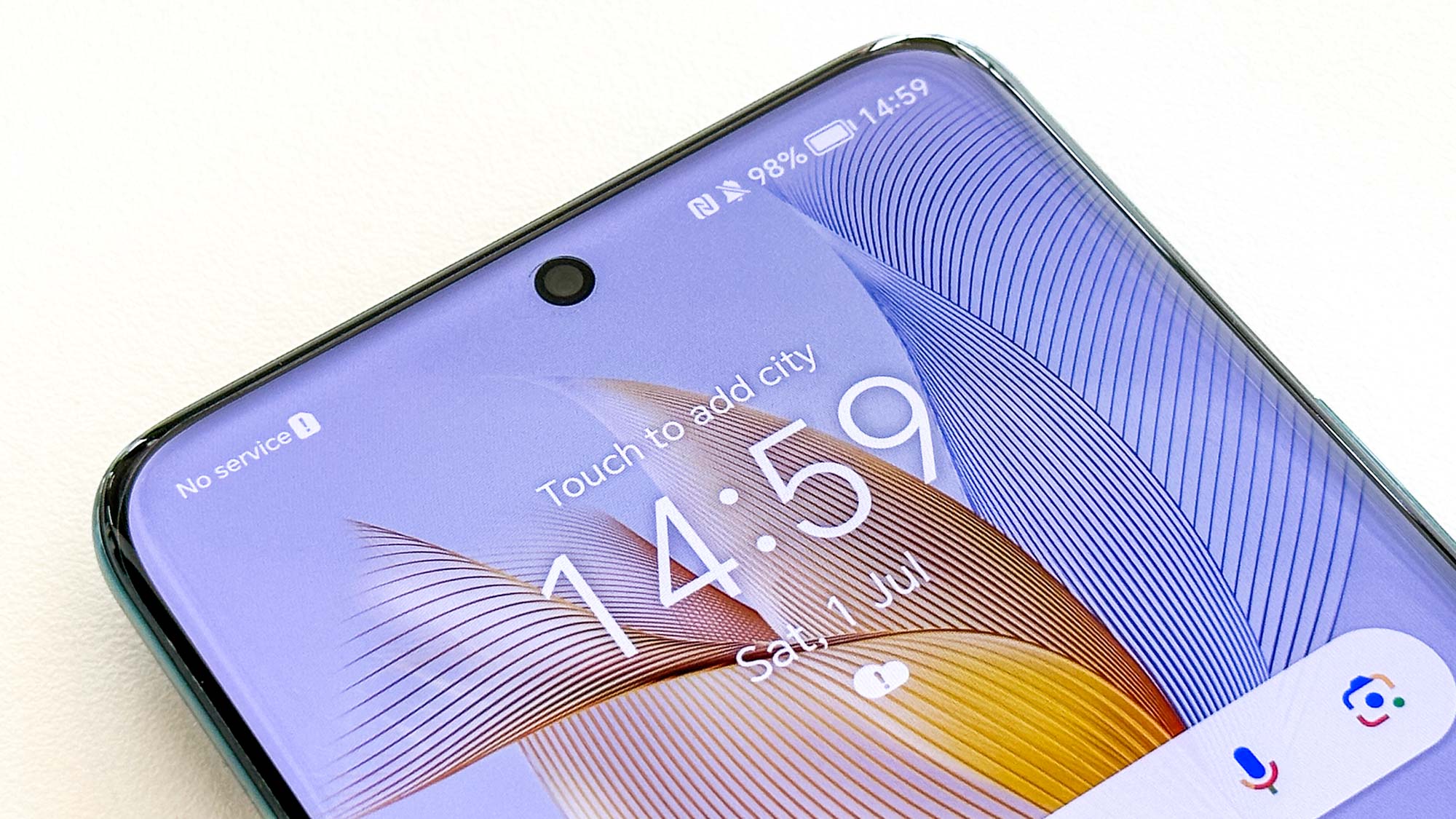
By default, the Honor 90's main camera takes photos at 12.5MP, just like the Pixel 7a. Unlike the Pixel, you can shoot at the sensor's full resolution on the Honor. This comparison uses the default resolution for both phones.
In this shot of Ladyburn Lake at Druridge Bay Country Park in Northumberland, England, we see the Honor produced a much more saturated shot, while the Pixel offers more contrast. Either approach can make for a good photo, but I think the Honor's overcooked its shot, leaving me with the Pixel as my favorite.
I used the main cameras to try a portrait-effect shot of Lola the cavachon. The Honor's got an advantage on paper thanks to its 2MP depth sensor, but the image turned out very soft, with a limited depth of field. Meanwhile, the Pixel did not blur much of the background, but rendered Lola's curly fur in much sharper detail.
Perhaps the Honor algorithm is tuned for human subjects, which would explain the short depth of field — people's heads are not known for being particularly long. However pet photos are at least as important as those of people to the average smartphone photographer, so Honor could stand to improve this.
We move back to Druridge Bay and to the phones' 12MP ultrawide cameras for this next comparison. Aside from a different field-of-view, the Honor again cranks up its image's brightness and color saturation. Fortunately, it's not done so to excess like on the main camera. So I consider this round a draw.
Lastly I tested the Honor 90's selfie camera with its impressive 50MP sensor. It still takes 12MP resolution images like the Pixel 7a, but produces an overall cooler shot, in a reversal from what we saw with the Honor's rear cameras. The detail of both shots is similar, but the strength and accuracy of the Pixel 7a's portrait effect is much better here, although neither phone did a good job at capturing the edge of my glasses.
The Google Pixel 7a is one of the best camera phones around, despite its low price. It was always going to be a tough opponent for the Honor 90, so while the Honor phone's not triumphed here, it's done quite well just to be in the same conversation as Google’s superior shooter.
Honor 90 review: Performance
Honor picked the Snapdragon 7 Gen 1 Accelerated Edition to power the Honor 90, with the silicon assisted by either 8GB or 12GB RAM depending on which version of the phone you buy. In contrast, the Pixel 7a uses Google’s own Tensor G2 chipset while the Galaxy A54 taps into an Exynos 1380 system-on-chip.
| Honor 90 | Google Pixel 7a | Samsung Galaxy A54 | |
| Chipset | Snapdragon 7 Gen 1 Accelerated Edition | Google Tensor G2 | Exynos 1380 |
| Geekbench 6 (single-core/multi-core) | 1,119 / 3,254 | 1401/ 3368 | 950 / 2731 |
| Wild Life Unlimited (score/fps) | 3228 / 19.3 | 6855 / 41.1 | 2828 / 16.9 |
| Wild Life Extreme Unlimited (score/fps) | 871 / 5.2 | 1828 / 10.9 | 795 / 4.8 |
| Adobe Premiere Rush transcoding test (mins:secs) | 1:44 | 0:56 | 1:11 |
The Honor 90 handily defeats the Galaxy A54 on every benchmark except our Adobe Premiere test in which we transcode a 4K video to 1080p with some minimal effects added. The Honor 90 seems particularly weak at that task taking 1 minute and 44 seconds to complete the job.
Meanwhile, the Tensor G2-equipped Pixel 7a beat the Honor 90 on every test, even if the margin is only small on the Geekbench 6 CPU benchmark.

The Tensor G2 is technically a flagship-grade chip, since you'll also find it in the Pixel 7 and Pixel 7 Pro. Compared to other flagships the Tensor G2 isn't that powerful, but when transplanted into the cheaper Pixel 7a, it offers power that beats any other Android in the same price bracket.
Honor's been very generous with storage space on the Honor 90 — you get 256GB by default with the option of upgrading to a 512GB model. Both the Pixel 7a and the Galaxy A54 only offer 128GB, though the A54 also offers a 256GB version in some markets and microSD expansion for up to another terabyte of space. But without shelling out for a roomy microSD card or extra cloud storage, you're going to fit the most stuff onto the Honor for the price.
Honor 90 review: Battery and charging
A flagship-grade 5,000 mAh battery sits inside the Honor 90, making good use of the phone's large body. To test its capabilities, I put the same video at 1080p on both the Honor and the Pixel 7a at full charge, set both to 50% brightness and left them to play.
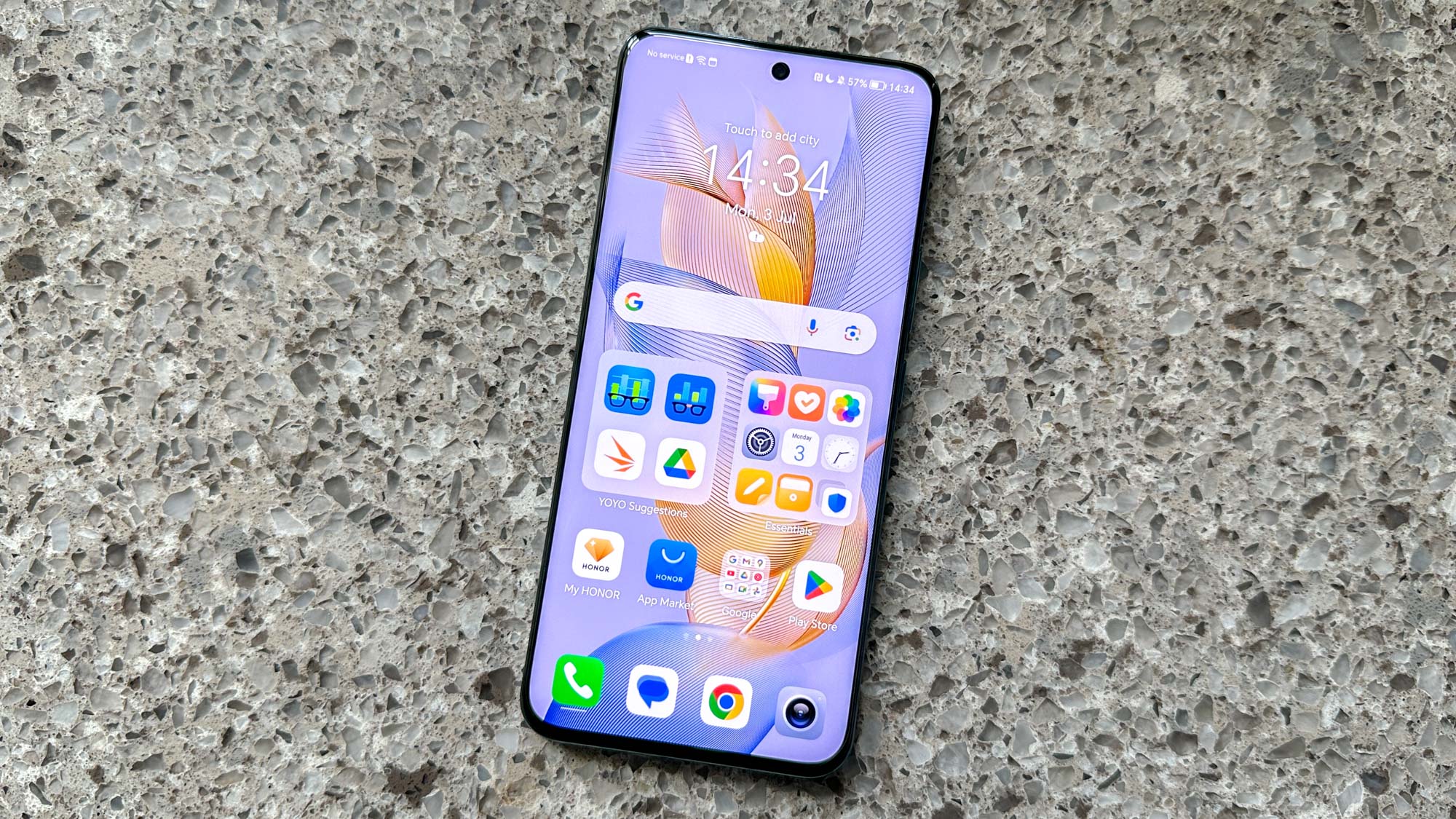
After my usual three-hour test, the phones were neck-and-neck at 84% full. After another three hours, the Honor 90 had drained slightly slower, sitting at 64% to the Pixel 7a’s 63% reading.
If you turn that percentage into milliamp hours drained, then the Honor has used more since it's got a bigger battery than the Pixel. But since it's also driving a much larger display at a much higher brightness, it's on balance the winner here.
When the Honor 90 does need refilling, Honor provides a 66W wired charger in the box, a speed that's faster than a lot of phones on the market, including expensive flagships from the biggest phone makers. On the Honor 90, this charger offers a 49% charge in 15 minutes, an 87% refuel in 30 minutes and gets the phone from 0 - 100% in 45 minutes.
The Pixel 7a only reaches 41% in 30 minutes with its 18W charging. It does offer wireless charging though, which is something you don't get on the Honor 90.
Honor 90 review: Software
Installed on the Honor 90 is MagicOS 7.1, Honor's dressing on the Android 13 salad. Honor promises two years of full OS updates and three years of security updates, which unfortunately falls behind Google's full three-year and Samsung's full four-year update plans for new software.
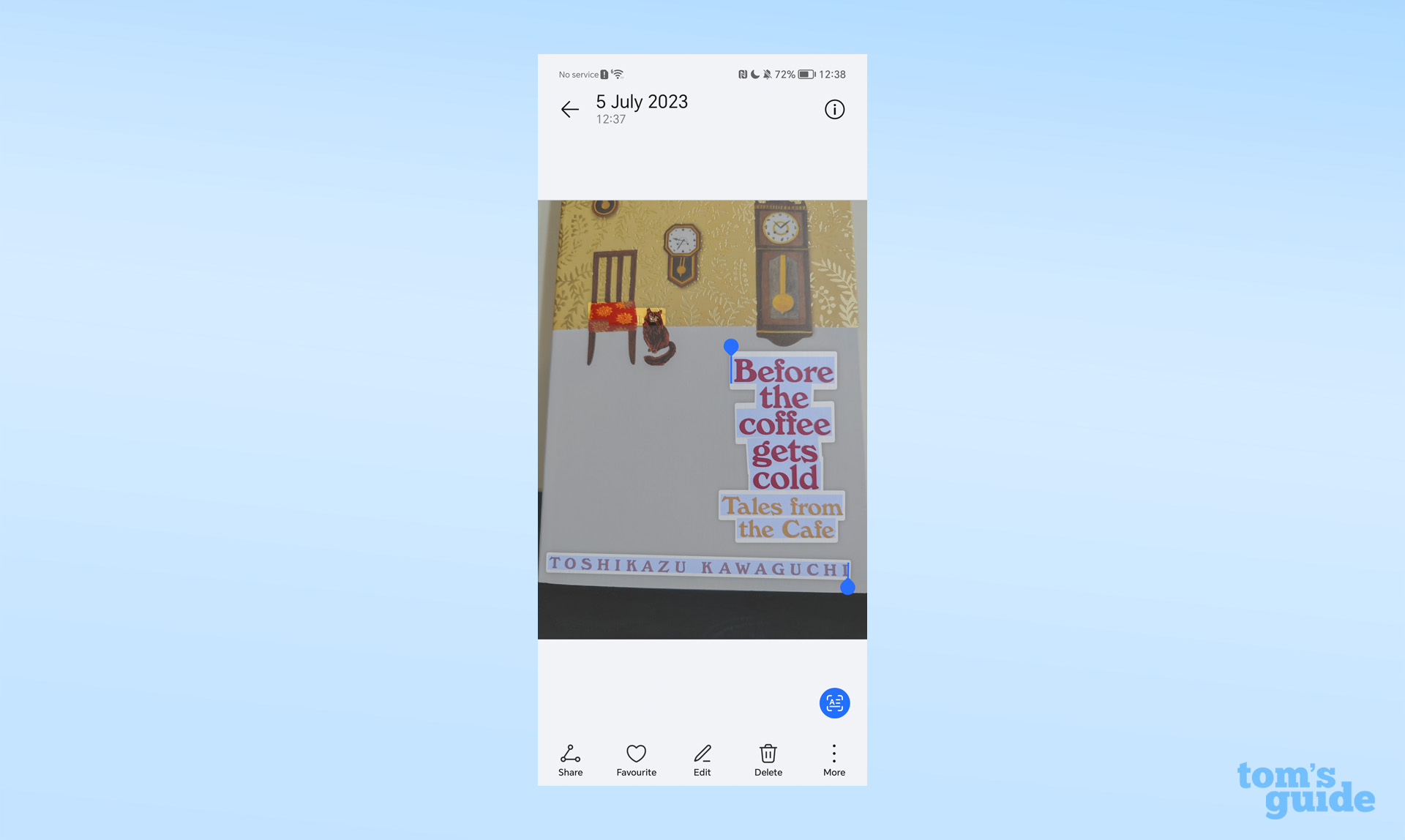
MagicOS provides Honor’s familiar suite of unique features like large folders, the ability to temporarily summon widgets by swiping up on apps and cross-device collaboration with Honor's tablets and laptops. New for MagicOS 7.1, though, is Magic Text. This lets you read and interact with text in images, such as following contact details or addresses to relevant apps, create PDFs from the captured text or just copy and paste what's written in the image. It's a trick you can already perform in iOS or in One UI, so it's nice to see Honor catch up.
Honor 90 review: Verdict
Even among other attractively-priced midrange phones, the Honor 90 offers quite the bargain. You get a lot of phone for your money thanks to the large display, long-lasting battery and high-res main camera, even if overall photo quality comes up a bit short.
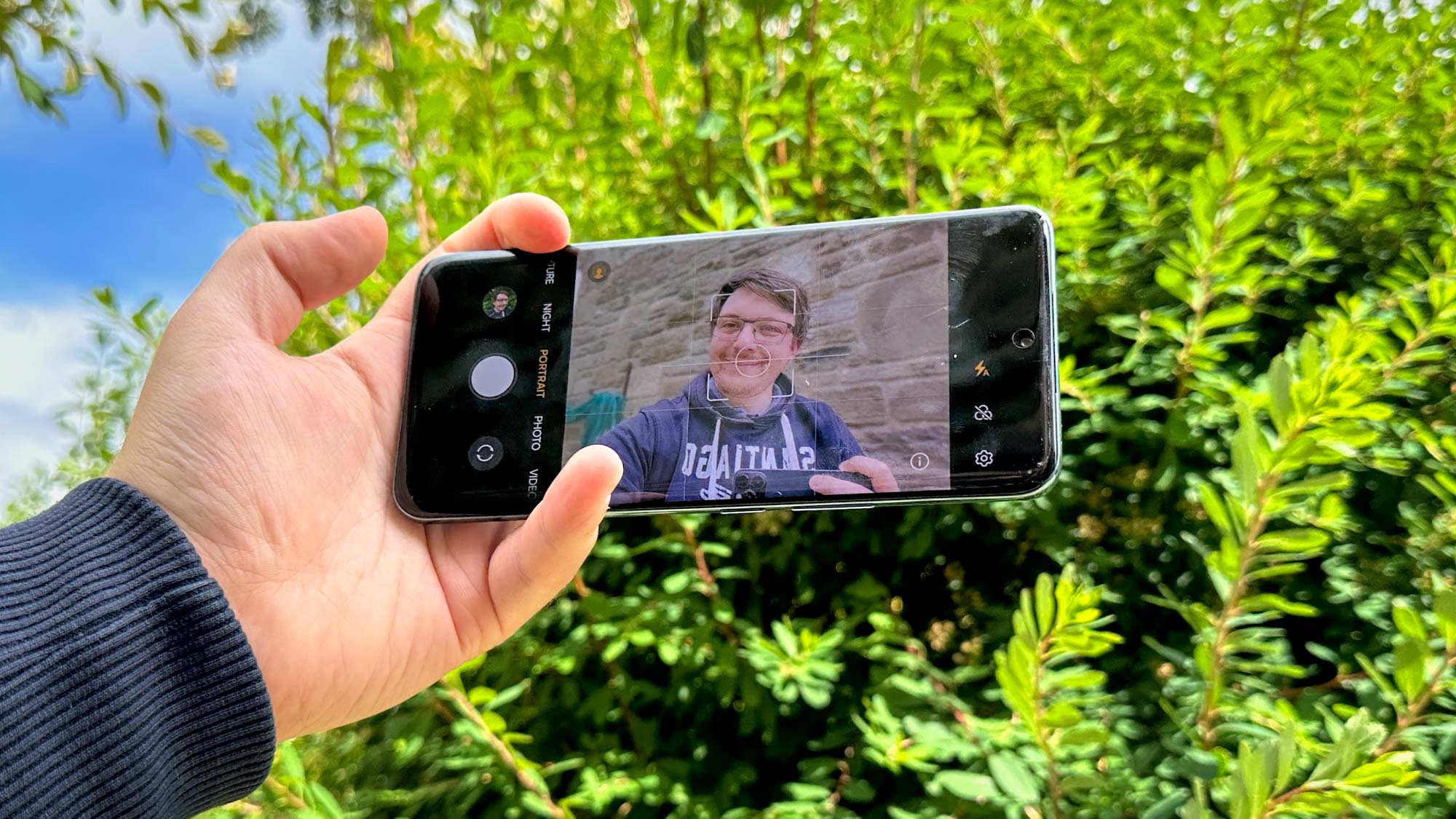
The Honor 90 delivers enough to make U.S. phone buyers jealous, even if the Galaxy A54 or Pixel 7a remain quality options. The Honor 90’s a world away from the iPhone SE, which may come with a powerful chip but also offers limited photography in a tiny, outdated chassis.
If you are in a country where the Honor 90 is sold, we still think you should check out the Pixel 7a and Galaxy A54 alongside the Honor, since they're better-rounded phones for the price. But the Honor 90 is absolutely worth shortlisting, especially if you want the maximum amount of display space, storage capacity and battery life for your money.

Richard is based in London, covering news, reviews and how-tos for phones, tablets, gaming, and whatever else people need advice on. Following on from his MA in Magazine Journalism at the University of Sheffield, he's also written for WIRED U.K., The Register and Creative Bloq. When not at work, he's likely thinking about how to brew the perfect cup of specialty coffee.
